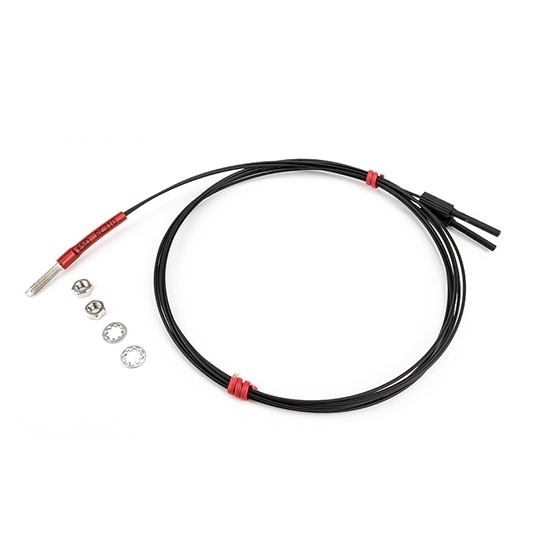
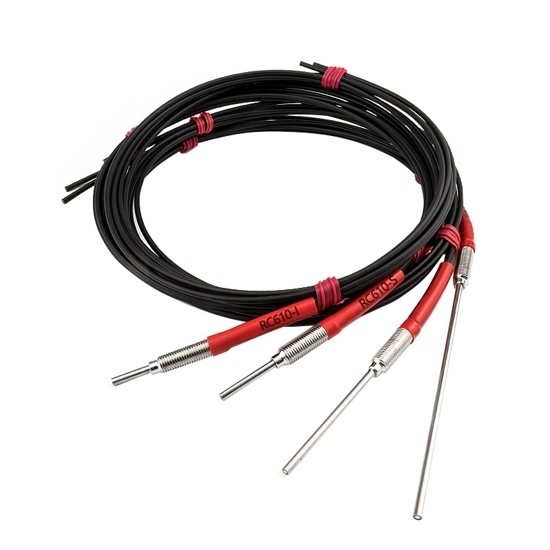
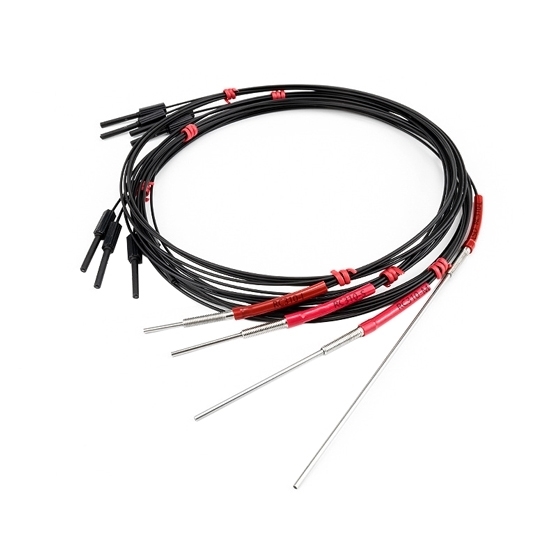
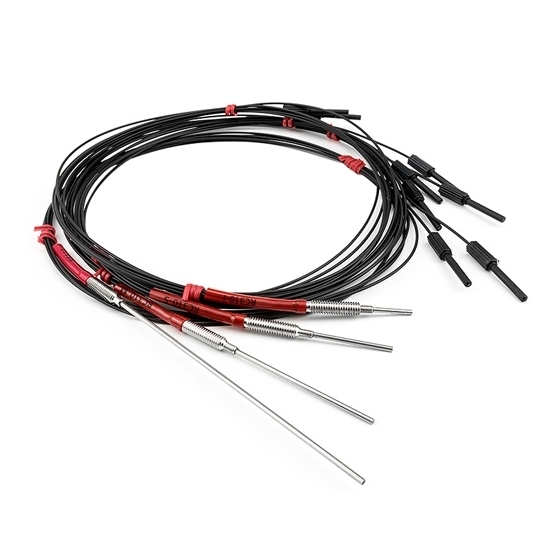
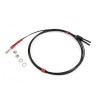
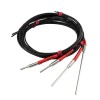
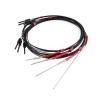
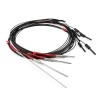
- Stock: In Stock
- Model: RDDLZ-FIBER-RC
- Weight: 1.00
- SKU: RDDLZ-FIBER-RC
Available Options
Enhance inspection efficiency, choose the versatile diffuse reflective fiber optic sensor! 1m fiber optic cable comes standard, suitable for multi-scenario layouts, with a wide range of adjustments (0~80mm), and extremely adaptable. No need for convex tube design (10/20/40/90mm convex tube for your choice), helping you to easily realize quick installation.
Specification
| Model | RDDLZ-LSDRC310 | RDDLZ-LSDRC410 | RDDLZ-LSDRC610 |
| Thread Size | M3*0.5mm | M4*0.75mm | M6*0.75mm |
| Sensing Distance | 100mm±10% | ||
| Adjustable Sensing Distance | 0~80mm | ||
| Convex Tube | Without convex tube | ||
| Note: (With 10/20/40/90mm convex tube is required.) Scroll down for selection. | |||
| Standard Detector | 200*200mm white cardboard | ||
| Fiber Optic Cable Length | 1M | ||
| With or Without Bump Tube | No | ||
| Fiber Material | Plastics | ||
| Medium Core Fiber Size | Fiber core 0.5mm*2 | ||
| Ring Fiber Size | Fiber core 0.25mm*9 | ||
| Minimum Detector | Diameter 0.2mm | ||
| Sheath Color | Red | ||
| Certification | CE | ||
| Fiber Tube Material | Stainless steel | Stainless steel | Copper nickel plating |
| Product Size | M3*18 | M4*21 | M6*23 |
| Net Weight | 3.3~6.0g | 3.6~6.6g | 11.5~19.0g |
Selection of Diffuse Reflective Fiber Optic Sensors
| Selection Reference | |||
| Without Convex Tube | RDDLZ-LSDRC310 | RDDLZ-LSDRC410 | RDDLZ-LSDRC610 |
| With 10mm Convex Tube | RDDLZ-LSDRC310-l | RDDLZ-LSDRC410-l | RDDLZ-LSDRC610-l |
| With 20mm Convex Tube | RDDLZ-LSDRC310-S | RDDLZ-LSDRC410-S | RDDLZ-LSDRC610-S |
| With 40mm Convex Tube | RDDLZ-LSDRC310-M | RDDLZ-LSDRC410-M | RDDLZ-LSDRC610-M |
| With 90mm Convex Tube | RDDLZ-LSDRC310-L | RDDLZ-LSDRC410-L | RDDLZ-LSDRC610-L |
Dimensional Drawing (unit: mm)
Applications
Tips: How do diffuse reflective fiber optic sensors work?
A diffuse reflective fiber optic sensor is a sensor that transmits light signals through an optical fiber for non-contact detection. It uses the diffuse reflection of light with the surface of the target object to measure the position, presence or absence, or color characteristics of the object. When light is emitted from the fiber optic transducer's transmitter and hits the surface of the target object, part of the light is diffusely reflected back to the sensor's receiver. The sensor analyzes the state of the object's surface by detecting changes in the intensity of the returning light. These sensors are commonly used in industrial environments where precise inspection is required or where direct access is difficult, such as automated assembly lines, package inspection and quality control.
